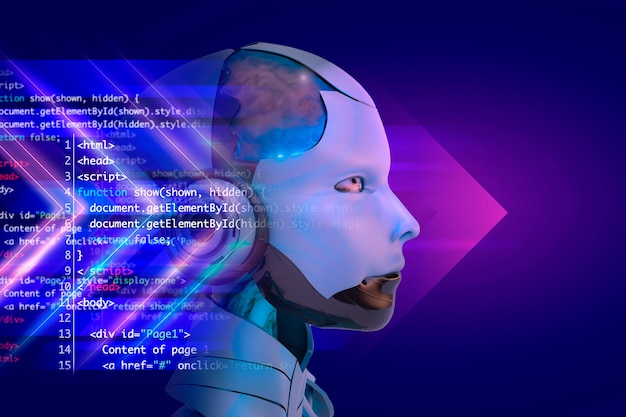
Our fascination with the human language has spilled over to imparting that gift to machines. We’re seeing artificial technology evolving at an exponential rate and programmers and scientists are fiddling with the idea of making AI “speak” human language.
In the realm of technology, few advancements have sparked as much interest and debate as Large Language Models (LLMs). These AI-driven frameworks are fundamentally reshaping what’s possible within computing, offering insights into how machines understand and generate human-like text. This exploration is designed to demystify LLMs, making their complex mechanisms accessible to those with a keen interest in technology.
The Genesis of Large Language Models
The story of LLMs starts with early experiments in natural language processing (NLP), stretching back decades. As noted earlier, scientists have directed their research efforts toward understanding and mimicking human language processing. Initially, these models were simple, capable of basic tasks like spell checks and grammar correction to simple written communication for businesses and individuals. Over time, with advancements in computational power and data availability, LLMs have evolved. Each iteration, from the initial rule-based systems to the neural networks of today, has been a step toward creating models that better grasp the subtleties of human language. The latest models represent a pivotal leap — they now grasp nuances, context, and even cultural references in the text. This evolution marks a significant leap towards machines that can comprehend and generate human-like text, bridging gaps between human and machine communication.

How Do Large Language Models Work?
LLMs function by analyzing and processing extensive datasets, learning from the patterns of language use within. This process contributes to the AI’s ability to predict and generate subsequent text pieces accurately.
Deep learning algorithms, also known as neural networks, are designed to simulate the way the human brain processes information. At the core of an LLM platform is a neural network architecture, which allows the model to improve continually as it is exposed to more data. These algorithms break down large amounts of data into smaller pieces and analyze patterns within them. With LLMs, the data being analyzed is text, and the patterns being identified are linguistic structures and relationships between words.
Training a model involves feeding it a diverse dataset of text, from which it learns patterns, grammar, and even style. The training process is both resource-intensive and sophisticated, leveraging what’s known as transfer learning to adapt pre-trained models to specific tasks with comparatively little additional input data. This adaptability makes LLMs versatile in applications, from composing texts to answering queries with nuance and precision.
If all this information makes your head spin, think of LLM as how our brain processes language and memory. Our brains receive repetitive and varied inputs and stimuli, then store and process them, enabling us to learn and develop language and use it to communicate with others.
The Power of Language Models in Practice
Reality paints a vivid picture of LLMs’ versatility. These models apply their learned knowledge, transforming industries and tasks. They excel in translation, content creation, and customer support, tailoring reactions and generating nuanced responses. In customer service, they power chatbots providing instant, human-like assistance. In content creation, they offer drafts that rival the touch of a skilled writer. Beyond these, LLMs are transforming coding, with models able to suggest code improvements or even generate code snippets, augmenting developers’ capabilities significantly. This capability enhances efficiency and personalization, offering solutions once deemed too complex for AI. Their adaptability across various languages and contexts broadens their utility, making them indispensable in global digital landscapes.
Navigating Ethical Waters: Controversy Surrounding Large Language Models
With great power comes great responsibility. Uncle Ben’s iconic advice to Peter Parker rings true to all life-altering activities that we do — LLMs are no exception. The rise of LLMs introduces pressing ethical considerations. Issues of bias, privacy, and accountability stand out. Since LLMs learn from vast online datasets, they may replicate or amplify existing biases in that data. This raises concerns about fairness and discrimination in AI-generated content. Privacy is challenged as these models learn from publicly available texts, including personal information. Accountability becomes complex as it’s difficult to trace the origins of AI-generated misinformation or offensive content. Addressing these issues requires careful design, regulation, and continuous evaluation of AI models. The tech community is actively engaged in debates on how best to approach these challenges, seeking solutions that ensure responsible use and equitable outcomes.
What the Future Holds
The future of Large Language Models (LLMs) teeters between boundless potential and pressing challenges. Advances promise to further narrow the gap between human-like understanding and AI capabilities, potentially revolutionizing sectors like education, healthcare, and more. Yet, alongside technical achievements, addressing ethical dilemmas remains paramount. With challenges surfacing at the early stages of its development, it can be considered a blessing in disguise. Mapping out potential roadblocks and pitfalls in LLM development allows scientists and data experts to fine-tune their approaches to addressing the challenges. Ensuring LLMs enhance societal well-being without exacerbating existing disparities calls for concerted efforts in transparent development, inclusive training datasets, and robust regulatory frameworks. The journey ahead for LLMs reflects not just a technological evolution, but a test of our collective commitment to responsible AI advancement.
Nevertheless, as we look at the horizon, the trajectory of LLMs hints at even more sophisticated models, capable of understanding and generating text with unprecedented accuracy. The emphasis is increasingly on models that can understand context more deeply, generate more nuanced responses, and be trained more efficiently.

Large Language Models are a fascinating advancement in the world of artificial intelligence and have the potential to revolutionize the way we interact with technology. For tech enthusiasts and the broader public alike, grasping the essence of Large Language Models is essential. By understanding their basic components and potential applications, we can better appreciate the benefits and challenges that LLMs bring to the table. They are not merely a technological novelty but a vector for profound change across industries and facets of daily life. Summing all this up, a solid grasp of LLMs is understanding a fundamental component of our digital future, where AI’s role is both expansive and integral.
As with any emerging technology, it’s essential to continue monitoring and addressing ethical concerns to ensure that LLMs are used responsibly for the betterment of society. So, keep an eye on this space as LLMs continue to evolve and shape our digital landscape.
Photo credits: Freepik
